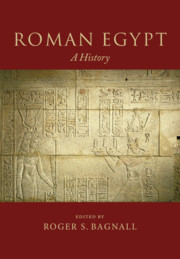Book contents
- Roman Egypt
- Roman Egypt
- Copyright page
- Contents
- Illustrations
- Maps
- Boxes
- Contributors
- Preface
- Chronology
- Maps
- 1 Laying the foundations for Roman Egypt
- 2 The coming of Roman rule
- 3 Development and crisis in a Roman province
- 4 The making of Late Antique Egypt
- 5 Divergence and division
- 6 The Persians, the Arab conquest, and another transformation of Egypt
- Epilogue
- Glossary
- Bibliography
- Index
Epilogue
Published online by Cambridge University Press: 19 August 2021
- Roman Egypt
- Roman Egypt
- Copyright page
- Contents
- Illustrations
- Maps
- Boxes
- Contributors
- Preface
- Chronology
- Maps
- 1 Laying the foundations for Roman Egypt
- 2 The coming of Roman rule
- 3 Development and crisis in a Roman province
- 4 The making of Late Antique Egypt
- 5 Divergence and division
- 6 The Persians, the Arab conquest, and another transformation of Egypt
- Epilogue
- Glossary
- Bibliography
- Index
Summary
That the millennium and a half from the time of the Persian Empire to Fatimid rule in Egypt witnessed much change in the land of the Nile will not surprise anyone. Empires and their dynasties came and went, and Egypt experienced two major religious transformations. With the Ptolemies and Fatimids, Egypt was in a sense independent, although the dynasties were not indigenous. With the Persians, Romans, and the early Arab regime, Egypt was part of a larger empire.
But these changes and many more coexisted with a number of continuities that helped to shape early medieval Egypt. These continuities do not point to an unchanging or “eternal” Egypt, as it has sometimes been depicted to the wider public. But they do suggest some important traits that helped to shape change.
- Type
- Chapter
- Information
- Roman EgyptA History, pp. 344 - 346Publisher: Cambridge University PressPrint publication year: 2021

